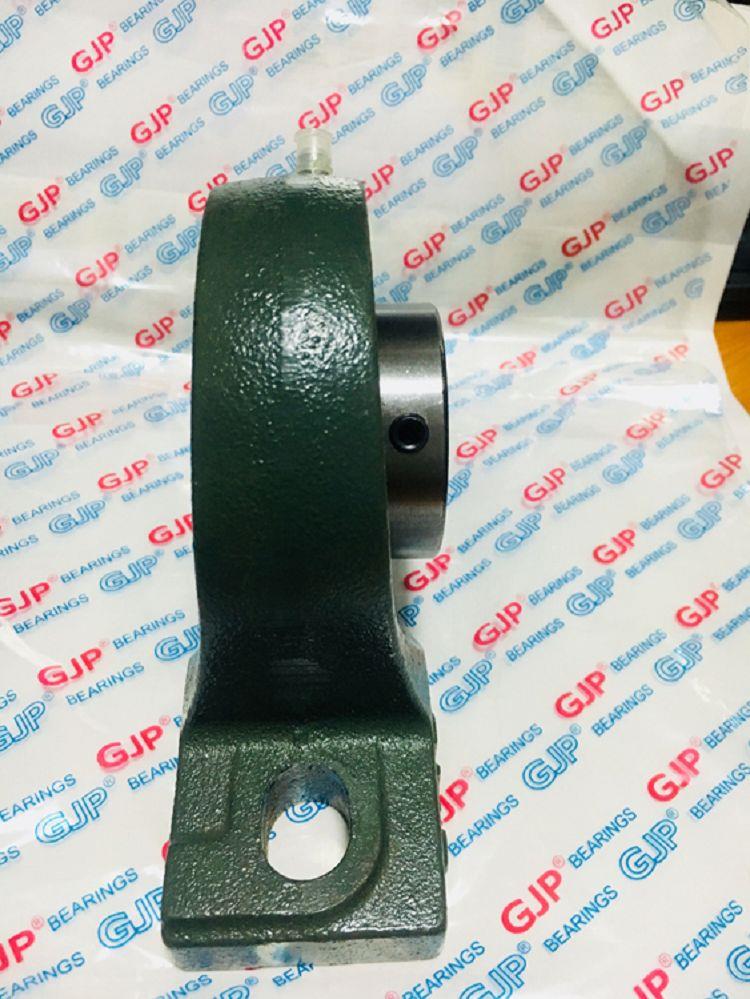Not every bearing will reach its expected life. In this blog, we’ll look at some of the common causes of premature bearing failure. All bearings must be replaced at some point, but by considering the following points, you’ll get the most out of them.

1. Poor lubrication
A common cause of premature failure is incorrect lubrication. Proper lubrication will reduce the friction between the parts. This reduces energy consumption, heat, wear and noise levels. In addition, lubricants protect against corrosion and dirt. Therefore, proper lubrication is of utmost importance. have to be aware of is:
- Wrong type of lubrication: There are many types of lubricants, of which grease and oil are the most common. However, not all products are the same! They may vary in consistency, viscosity of the (base) oil, water resistance, shelf life, etc. Also, some applications may require special properties. These include lubricants for the food and pharmaceutical industries, or applications involving chemical vapors or extreme temperatures. Make sure the choice of lubricant is compatible with its application.
- Insufficient lubrication: Too little lubricant can cause steel-to-steel contact between the rolling body and the raceways. This increases heat generation and speeds up wear.
- Over-lubrication: Using too much lubricant can also lead to increased temperatures due to increased friction from the lubricant itself. Seals may also be damaged. Again, this can cause premature failure of the bearing.
When changing lubricants, always remember to remove the old, contaminated grease first.
Tip: Use the convenient Schaeffler Grease app to get customized lubrication advice.
2. Incorrect (disassembly) method of assembly
Bearings that are not installed correctly may be damaged in the process. Do not use a hammer to force the bearing in place. Always use the correct method, whether it’s mechanical, hydraulic, or even heat, to install a bearing, and always use the proper tools. Care should be taken when dismounting worn bearings so that replacement bearings can be installed without any problems. We provide tools for safe installation and removal, such as bearing pullers, hook wrench sets and shipping kits.
The alignment of the shaft on which the bearing is installed is also important. In fact, misalignment may hasten bearing failure.
3. Wrong selection of bearings
No matter how skilfully installed a bearing is, if the bearing type is not suitable for the application, it will fail prematurely. The type of load plays an important role (radial, axial or combined), as must the correct capacity and dimensions.
Furthermore, specific or extreme operating conditions may exist. Bearings can be subject to severe shock and vibration, and even electric charges. In these cases, bearings designed for these purposes (often identifiable by a specific suffix) should always be chosen. You can find an example of FAG QP51 bearings in our blog
4. Dirt
Small dirt particles (such as grit and dust) that get into the bearing or lubricant can cause excessive wear. Possible causes of dirt introduction can be:
Wrong type of seal: If a seal cannot withstand certain conditions, such as high speeds, high temperatures, or loads, it can fail and no longer prevent dirt from entering the bearing.
- Improperly positioned seals: If the seals are not installed correctly, the bearings may not seal properly and dirt particles may enter the system.
- Worn or Damaged Seals: Due to wear or damage, the performance of seals decreases over time. Worn or damaged seals are no protection against contamination.
- Improper Storage or Use: Bearings must be stored in a clean, cool place free from moisture, dust or other dirt. Do not remove the packaging and protective film until assembled. Care is also needed when transporting and moving bearings. Shocks and drops can cause damage that is not always visible, which can increase the chance of contamination.
5. Overload and underload
- Overloading: If bearings are continuously overloaded, premature metal fatigue may occur. Metal fatigue is the result of constantly changing loading on the bearing raceway surfaces. The strength of the material is reduced until small cracks appear and the parts fall apart. Fatigue often occurs as bearings near the end of their expected service life, regardless of the load they are being subjected to. Avoid overloading as much as possible to prevent fatigue from occurring prematurely.
- Heavy Loads: Bearings require minimal loading for proper performance, especially when high speeds and large gears are involved. If the load is too low, the balls or rollers will not roll but will drag across the raceway. These sliding motions increase friction and cause material damage.
Related Products




